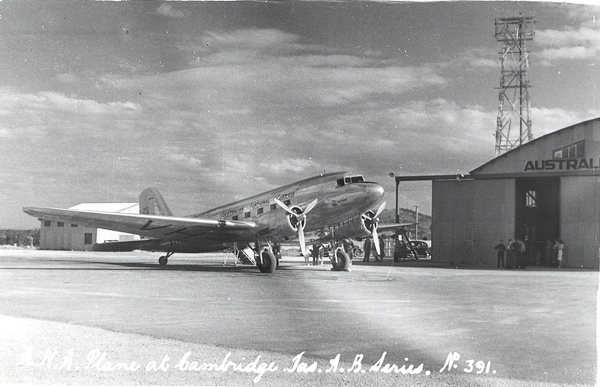 |
 |
|
Holyman Family
The Holyman family came to Tasmania when seafarer William Holyman (1833–1919) deserted ship at George Town, and is said to have spent three months on the treadmill as punishment. He married, and his three sons became seafarers. William bought his first ship in 1861, and traded on the north-west coast. By the late 1870s the family owned four vessels, each commanded by a Holyman. In the 1890s they commenced services across Bass Strait. Trade-sharing deals with the Union Steamship Company and Huddard Parker in 1902 eventually resulted in a company 45 percent owned by Holymans. In 1908 Holyman Brothers purchased Waterhouse and Twenty Day islands, and in 1916 Robbins and Trefoil islands. In 1932 Holymans purchased Tasmanian Aerial Services, renamed Holyman Airways in 1934. Two years later, Holymans and three other companies formed Australian National Airways. In 1945–56 the company flew the longest internal route mileage of any airline in the world, and in 1957 it was sold to Ansett Transport Industries. Holymans branched out into other areas, establishing, taking over or investing heavily in the motor vehicle industry (1930), Rapson Tyre Company (1931), timber interests (1933), Alexander Racket Factory (1944), Wrest Point Hotel, Hobart (1947), Dewcrisp hydrated vegetable factory, Scottsdale (1948), Tasmanian Board Mills to make converted paper for cardboard boxes (1948), and Northern Motors (1960), the first distributors for Nissan Motor Company. Throughout its history the Holyman Company owned 62 vessels – the last to operate for the company, Mary Holyman, ceased trading in 1987. William Holyman and Sons developed a forwarding and road transport network through Australia and New Zealand. Further reading: P Yule, The forgotten giant of Australia aviation, Melbourne, 2001. Robin Holyman |
Copyright 2006, Centre for Tasmanian Historical Studies |
